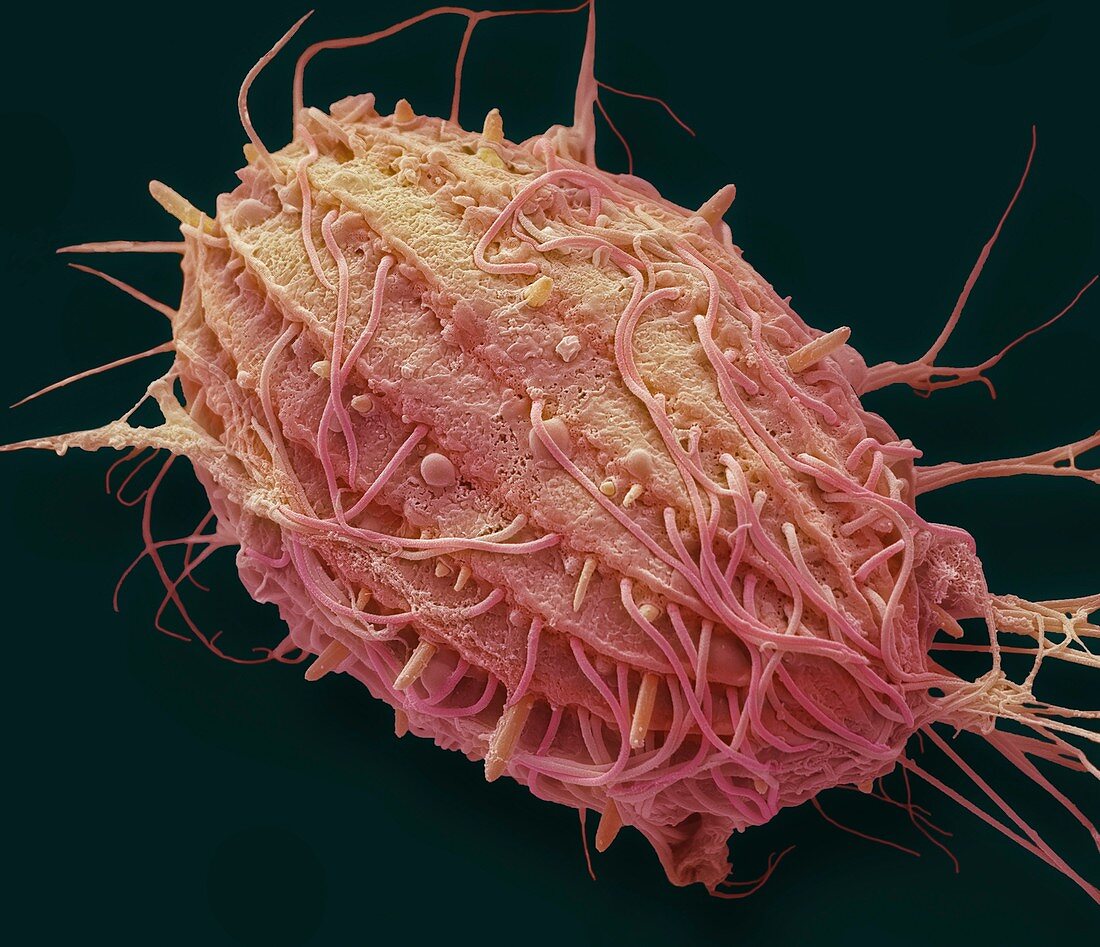Marine ciliate protozoan, SEM
Bildnummer 12250104

| Marine ciliate protozoan. Scanning electron micrograph (SEM) of a cilliate protozoan (unicellular animal) found in a marine rock pool. The ciliates are so named because of the hair-like cilia surrounding their bodies which are used for locomotion and sweeping in food. Their diet consists mainly of bacteria and other food particles, which are digested in a food vacuole. They live in water and are typically invisible to the naked eye, although the largest ciliate reaches a length of 2 millimetres. Magnification: x4000 when printed at 10 centimetres wide. Specimen courtesy of Mike Allen, Plymouth Marine Laboratory. | |
| Lizenzart: | Lizenzpflichtig |
| Credit: | Science Photo Library / Gschmeissner, Steve |
| Bildgröße: | 4555 px × 3922 px |
| Modell-Rechte: | nicht erforderlich |
| Eigentums-Rechte: | nicht erforderlich |
| Restrictions: | - |
Preise für dieses Bild ab 15 €
Universitäten & Organisationen
(Informationsmaterial Digital, Informationsmaterial Print, Lehrmaterial Digital etc.)
ab 15 €
Redaktionell
(Bücher, Bücher: Sach- und Fachliteratur, Digitale Medien (redaktionell) etc.)
ab 30 €
Werbung
(Anzeigen, Aussenwerbung, Digitale Medien, Fernsehwerbung, Karten, Werbemittel, Zeitschriften etc.)
ab 55 €
Handelsprodukte
(bedruckte Textilie, Kalender, Postkarte, Grußkarte, Verpackung etc.)
ab 75 €
Pauschalpreise
Rechtepakete für die unbeschränkte Bildnutzung in Print oder Online
ab 495 €
